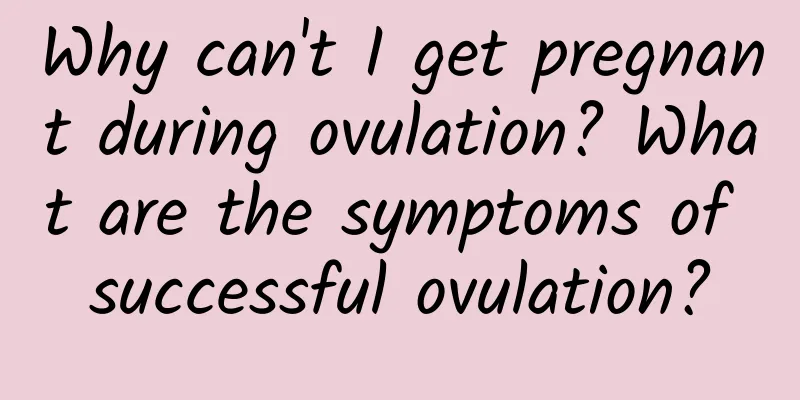18 days after normal delivery, lochia comes and goes

|
After a woman gives birth, lochia will be discharged from her vagina. Postpartum lochia needs to be kept for a while before it can be cleaned up. After the postpartum lochia is clear, the woman's body will slowly recover. However, for some women, postpartum lochia sometimes cannot be completely eliminated. So when you have postpartum lochia more than 20 days after giving birth, what should you do sometimes? What is lochia? 1. What should I do if the mother has persistent lochia? Lochia retention, in medicine, refers to the failure of lochia to clear 6 weeks after delivery or is accompanied by irregular uterine bleeding. If a woman has persistent lochia, in many cases it is because she did not take good care of herself after giving birth. What should I do if a woman has persistent lochia? It is recommended that pregnant women take more rest during the confinement period, and remember the following: 1. Pregnant women should actively treat various pregnancy diseases before giving birth, such as pregnancy-induced hypertension syndrome, anemia, vaginitis, etc. 2. For patients with placental abruption and elderly people during delivery, give antibiotics to prevent infection. 3. After giving birth, pregnant women should carefully check whether the embryo and placenta are complete. If there are any residues, they should be properly handled. Check the embryo and placenta. Lay the embryo flat with the pregnant mother facing upwards. Pay attention to whether the leaves are aligned and whether there is any damage. Then the placenta is taken out to check whether it is intact. At the same time, pay attention to whether there are abnormal blood vessels passing through the placenta. If there are broken blood vessels, it means that there may be a "accessory placenta" remaining in the uterine cavity. If the embryo is incomplete or most of the fetal membrane remains, it must be removed by hand or with instruments into the uterine cavity under strict disinfection to prevent postpartum hemorrhage or infection. If a small part of the fetal membrane remains, uterine contraction drugs can be used after delivery to promote its natural excretion. 4. Persistent breastfeeding is beneficial to uterine contraction and the discharge of postpartum lochia. 5. Observe the color, amount and smell of postpartum lochia every day after delivery. Normal postpartum lochia should have no peculiar smell but contain a fishy smell. If a peculiar smell is found, it may be that there are fetal remains in the uterus and should be treated immediately. 6. Measure the degree of uterine contraction regularly and accurately. If you find that the contraction is poor, you should see a doctor and take new uterine contraction drugs. 7. Maintain vaginal cleanliness. Because of the postpartum lochia discharge, women must change sanitary napkins frequently to keep them fresh. It is best to temporarily refrain from having sex to prevent infection. 8. If the mother has continuous lochia and suspects that there is placenta residue, she should go to the hospital immediately and receive treatment under the guidance of a doctor. 2. What is postpartum lochia? After delivery, the decidua of the uterus, especially the decidua of the embryonic appendages, falls off, and the blood, necrotic decidua and other tissues are discharged through the vagina, which is called postpartum lochia. Normal postpartum lochia has a slight fishy smell, and the total output is about 500-1000ml, but it is not smelly. The duration of postpartum lochia varies from person to person. Under normal circumstances, postpartum lochia will clear up in about three weeks after giving birth, with an average of about 21 days, the shortest being 14 days, and the longest being up to 6 weeks. The article explains in detail what lochia is, how long it takes for postpartum lochia to go away, and what to do if postpartum lochia continues for more than 20 days. If you are a pregnant woman, you'd better take the initiative to observe your own health status. In fact, it is normal for postpartum lochia to occur intermittently for more than 20 days. You can refer to the methods introduced in the article to deal with it. |
<<: 12 days after normal delivery, lochia and blood
>>: Ten days after normal delivery, the lochia suddenly became bright red
Recommend
What causes bloating and frequent farting? How to relieve bloating and farting
Why do you often feel bloated and fart? In additi...
Pregnant women should keep these precautions in mind when measuring blood sugar
Pregnant women should pay attention to controllin...
Reasons for discomfort in women
The lower part of a woman is what we often call t...
Can women have abortion after more than a month?
There are many accidents in life, and pregnancy i...
Food Safety | How high is the nutritional value of sweet potatoes? Experts will show you the truth
...
How long will the stomach ache last after taking Mirena?
Mirena IUD is a new-tech slow-setting contracepti...
What is the reason for leg pain during menstruation?
If a woman is not pregnant or in menopause, her m...
What should I do if I don’t sleep well during confinement?
Many pregnant women will experience a decline in ...
What to do if your gums swell and ache during pregnancy
Many people will experience swollen and painful g...
Is soapberry useful for hair growth? Hair growth effect of soapberry
Soap beans are the mature fruits of the soapberry...
Can pregnant women eat mangoes?
There are many foods that cannot be eaten during ...
What should I do if my lower abdomen feels heavy during menstruation?
When you have your period, you may feel a heavine...
Are allergies causing you a lot of pain? Someone is a thousand times more unlucky than you | International Allergy Day
In the past, when materials were not abundant, it...
The first and second babies react differently. Are the genders the same?
Many women will have a certain degree of pregnanc...









